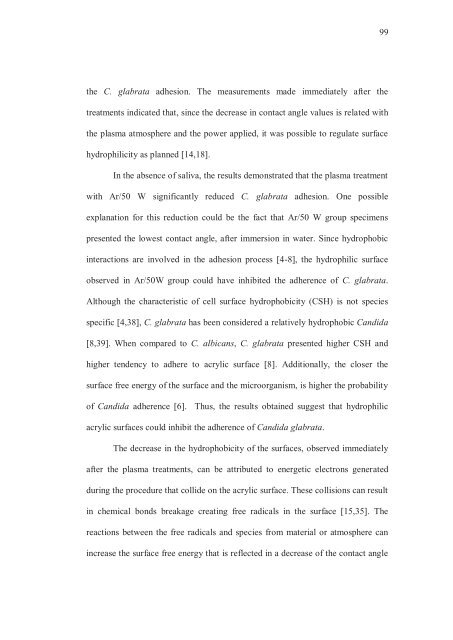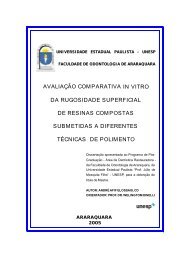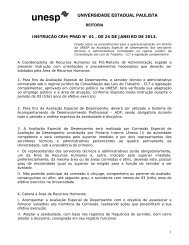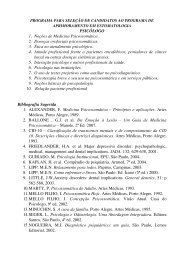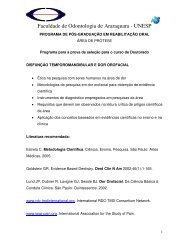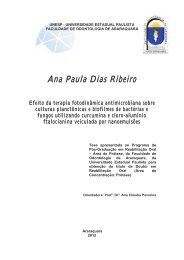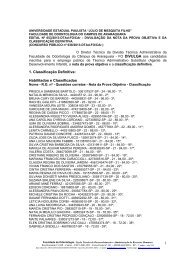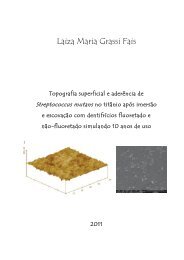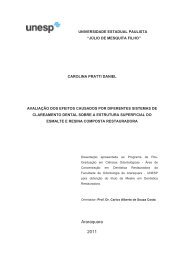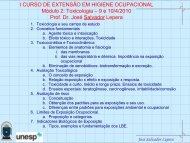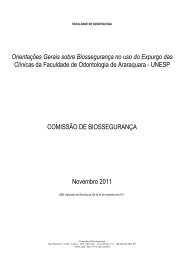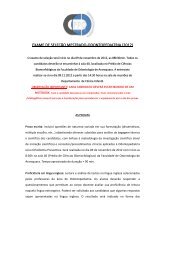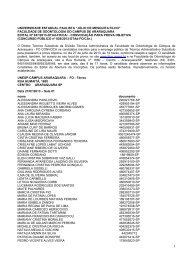universidade de são paulo - Faculdade de Odontologia - Unesp
universidade de são paulo - Faculdade de Odontologia - Unesp
universidade de são paulo - Faculdade de Odontologia - Unesp
You also want an ePaper? Increase the reach of your titles
YUMPU automatically turns print PDFs into web optimized ePapers that Google loves.
99<br />
the C. glabrata adhesion. The measurements ma<strong>de</strong> immediately after the<br />
treatments indicated that, since the <strong>de</strong>crease in contact angle values is related with<br />
the plasma atmosphere and the power applied, it was possible to regulate surface<br />
hydrophilicity as planned [14,18].<br />
In the absence of saliva, the results <strong>de</strong>monstrated that the plasma treatment<br />
with Ar/50 W significantly reduced C. glabrata adhesion. One possible<br />
explanation for this reduction could be the fact that Ar/50 W group specimens<br />
presented the lowest contact angle, after immersion in water. Since hydrophobic<br />
interactions are involved in the adhesion process [4-8], the hydrophilic surface<br />
observed in Ar/50W group could have inhibited the adherence of C. glabrata.<br />
Although the characteristic of cell surface hydrophobicity (CSH) is not species<br />
specific [4,38], C. glabrata has been consi<strong>de</strong>red a relatively hydrophobic Candida<br />
[8,39]. When compared to C. albicans, C. glabrata presented higher CSH and<br />
higher ten<strong>de</strong>ncy to adhere to acrylic surface [8]. Additionally, the closer the<br />
surface free energy of the surface and the microorganism, is higher the probability<br />
of Candida adherence [6]. Thus, the results obtained suggest that hydrophilic<br />
acrylic surfaces could inhibit the adherence of Candida glabrata.<br />
The <strong>de</strong>crease in the hydrophobicity of the surfaces, observed immediately<br />
after the plasma treatments, can be attributed to energetic electrons generated<br />
during the procedure that colli<strong>de</strong> on the acrylic surface. These collisions can result<br />
in chemical bonds breakage creating free radicals in the surface [15,35]. The<br />
reactions between the free radicals and species from material or atmosphere can<br />
increase the surface free energy that is reflected in a <strong>de</strong>crease of the contact angle


